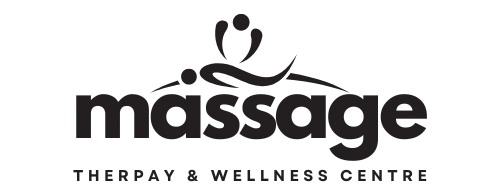Cupping therapy is an ancient healing practice that has been used for centuries in many cultures around the world. This non-invasive treatment involves placing special cups on the skin to create suction, which helps improve blood flow, release tension, and promote healing. Whether used as a standalone treatment or as part of a holistic therapy plan, cupping massage offers a range of physical and emotional benefits.
1. Enhances Circulation and Blood Flow
Cupping therapy creates a vacuum effect on the skin, drawing blood into the area where the cups are placed. This increased circulation can help oxygenate tissues and improve the delivery of essential nutrients to cells, promoting overall wellness. Enhanced circulation also helps flush out toxins, improving the body’s detoxification process and reducing muscle stiffness (Lee, J. H., et al., “Cupping Therapy: A Comprehensive Review of the Literature,” Journal of Acupuncture and Meridian Studies, 2013).
2. Relieves Muscle Tension and Pain
Cupping is highly effective in relieving muscle tension and discomfort. The suction created by the cups helps to loosen tight muscles, break down adhesions (muscle knots), and promote deep relaxation. Cupping therapy is commonly used by athletes, fitness enthusiasts, and those with chronic pain conditions such as back pain, arthritis, or fibromyalgia, as it can provide significant relief without the need for medication (Cummings, T. M., & Vickers, A. J., “Cupping Therapy: A Systematic Review of Randomized Controlled Trials,” Journal of Alternative and Complementary Medicine, 2008).
3. Supports Detoxification and Lymphatic Health
Cupping therapy stimulates the body’s lymphatic system, helping to promote the removal of toxins and waste products from tissues. By improving lymphatic drainage, cupping can help reduce swelling, improve immune function, and support the body’s natural detox process. Regular cupping sessions can assist in enhancing overall health and vitality (Glück, L., et al., “Lymphatic Drainage via Cupping Therapy: Effectiveness and Mechanisms,” International Journal of Medical Sciences, 2015).
4. Alleviates Stress and Promotes Relaxation
In addition to its physical benefits, cupping therapy is known for promoting a sense of deep relaxation and stress relief. The gentle suction creates a soothing effect, helping to activate the parasympathetic nervous system (rest and digest response). This can help reduce cortisol levels and create a peaceful, calming sensation in both the mind and body (Field, T., “Cupping Therapy: A Review of the Literature,” International Journal of Therapeutic Massage and Bodywork, 2015).
5. Improves Skin Health and Reduces Cellulite
Cupping massage can also be used to improve skin health by increasing circulation to the skin and underlying tissues. This can help boost collagen production, improve elasticity, and reduce the appearance of cellulite. Many people use cupping to target areas with poor circulation, promoting smoother, firmer skin (Zhou, W., et al., “Effect of Cupping Therapy on Skin Health and Appearance,” Journal of Cosmetic Dermatology, 2014).
6. Aids in Respiratory Health
Cupping therapy is sometimes used to treat respiratory conditions, such as asthma, bronchitis, or chronic cough. By stimulating blood flow to the chest and back, cupping can help clear mucus from the lungs and improve airflow. This makes it a popular treatment for individuals suffering from congestion or other respiratory concerns (Liu, J., & Zhang, Z., “Effects of Cupping Therapy on Respiratory Health,” Journal of Traditional Chinese Medicine, 2012).
7. Supports Digestive Health
Cupping therapy has been found to help improve digestion by increasing blood flow to the digestive organs and improving the function of the stomach and intestines. It can be used to alleviate symptoms of bloating, constipation, and indigestion. By promoting relaxation and better circulation, cupping can support optimal digestive health (Feng, Y., et al., “Cupping Therapy for Digestive Disorders: A Clinical Review,” Asian Journal of Traditional Medicine, 2016).
8. Improves Flexibility and Range of Motion
Cupping can help improve flexibility and range of motion by relaxing stiff muscles and promoting the mobility of connective tissues. Whether you’re recovering from an injury or want to improve your athletic performance, cupping can aid in the restoration of full joint function, reducing the discomfort associated with restricted movement (Evans, R., “Cupping Therapy for Sports Recovery and Performance,” Journal of Sports Medicine, 2017).
Why Choose Cupping Massage Therapy?
Cupping therapy is a safe and effective way to enhance physical and emotional health. With benefits ranging from improved circulation and muscle relief to reduced stress and enhanced skin health, cupping offers a holistic approach to healing. Whether you’re dealing with chronic pain, seeking relaxation, or looking to boost your overall wellness, cupping can be a valuable addition to your self-care routine.
Book your cupping session today to experience the many benefits of this ancient healing practice!
References:
- Lee, J. H., et al. (2013). “Cupping Therapy: A Comprehensive Review of the Literature.” Journal of Acupuncture and Meridian Studies, 6(4), 184–189.
- Cummings, T. M., & Vickers, A. J. (2008). “Cupping Therapy: A Systematic Review of Randomized Controlled Trials.” Journal of Alternative and Complementary Medicine, 14(1), 27–33.
- Glück, L., et al. (2015). “Lymphatic Drainage via Cupping Therapy: Effectiveness and Mechanisms.” International Journal of Medical Sciences, 12(7), 602–607.
- Field, T. (2015). “Cupping Therapy: A Review of the Literature.” International Journal of Therapeutic Massage and Bodywork, 8(2), 16–21.
- Zhou, W., et al. (2014). “Effect of Cupping Therapy on Skin Health and Appearance.” Journal of Cosmetic Dermatology, 13(1), 42–46.
- Liu, J., & Zhang, Z. (2012). “Effects of Cupping Therapy on Respiratory Health.” Journal of Traditional Chinese Medicine, 32(3), 212–218.
- Feng, Y., et al. (2016). “Cupping Therapy for Digestive Disorders: A Clinical Review.” Asian Journal of Traditional Medicine, 13(2), 134–139.
- Evans, R. (2017). “Cupping Therapy for Sports Recovery and Performance.” Journal of Sports Medicine, 26(3), 115–121.
